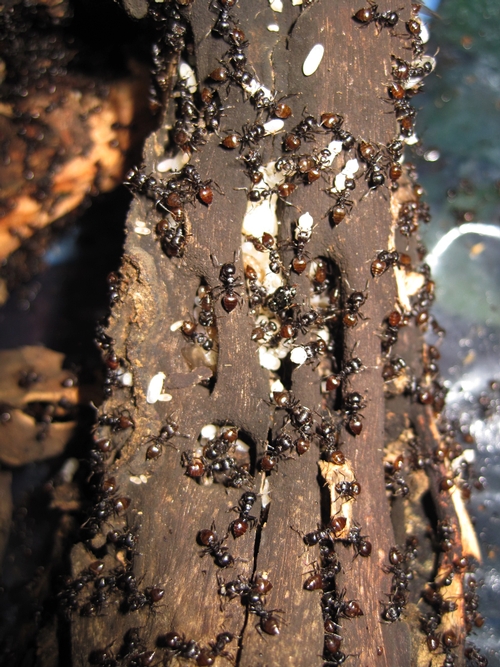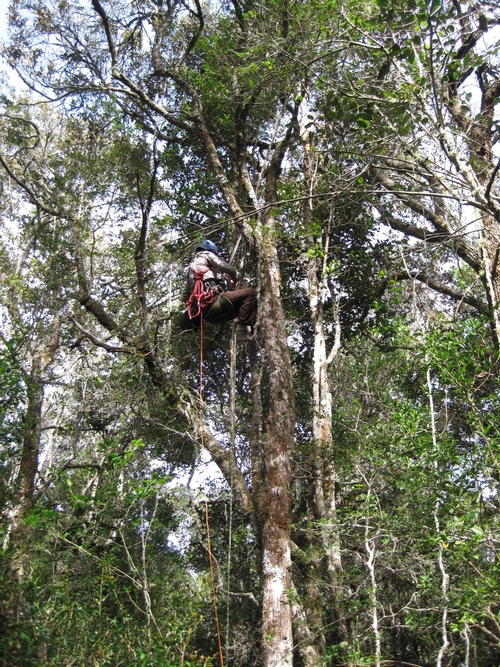
(A) Ants, (B) Bonnie Blaimer and (C) Crematogaster.
Add a double "M" and you have a myrmecologist studying ants in Madagascar.
Bonnie Blaimer, a graduate student in entomology at the University of California, Davis, just received a National Science Foundation Dissertation Improvement Grant for $13,794 to help support her doctoral dissertation research on the systematic and evolution of Malagasy ants of the genus Crematogaster in Madagascar.
Blaimer, who studies with major professor Phil Ward, a noted ant specialist, describes Crematogaster ants as "a species-rich, world-wide occurring group of ants with a notoriously difficult species-level taxonomy."
Why these ants? Blaimer said she first became interested in them when she was doing field work in Madagascar as an intern for the Cal Academy of Sciences.
“This genus fascinates me particularly because of its species diversity and dominance in tropical forests, and its intriguing natural history,” she said. “Most species are canopy-nesting in dead twigs and branches or under bark, or they make elaborate independent carton-nest from wood fibers. Some species are suspected to be temporary social parasites, and many tend scale insects or mealybugs. In short, many different aspects remain still open for investigation beyond my dissertation work!”
Blaimer, who holds a master’s degree in Forest Sciences from Albert-Ludwigs-University in Freiburg, Germany, says she will mostly use the NSF funds to perform DNA sequencing of the Malagasy species and also a variety of species from other biogeographical regions.
"This enables me to investigate and revise species boundaries within Crematogaster in Madagascar, and to establish a framework phylogeny for the genus upon which I can explore the evolution of the genus in the Malagasy region. A smaller portion of the grant will further allow me to travel to Madagascar to do some outreach and education work.”
Blaimer is the co-principal investigator of the grant, titled "Aligning Ant Diversity with Conservation Priorities in a Biodiversity Hotspot: Systematics and Biogeography of the Arboreal Ant Crematogaster in Madagascar." Her major professor serves as the principal investigator.
Be sure to check out the Phil Ward lab website.
Ward welcomes visitors with:
"We are a group of myrmecologists who study the taxonomy, evolution, biogeography and behavior of ants.
"In many terrestrial habitats – especially those of the lowland tropics – ants rival other arthropods in numerical abundance, ecological importance and species richness. Our research is concerned with unraveling details about the evolutionary history of ants and attempting to understand the processes that have generated such an extraordinary diversity of form and function. This work entails both species-level taxonomy and analyses of phylogenetic relationships.
"Visit our research pages to learn more about current projects."
And for amazing photos of ants, check out the websites of University of Illinois biologist-insect photographer Alex Wild, former graduate student of Phil Ward's. Wild maintains http://myrmecos.net/ and http://www.alexanderwild.com/.
Attached Images:

Crematogaster ants

Canopy Work